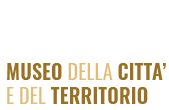The experimental science of Galileo Galilei and his students and the connection between astronomical studies and maps were transformed into the district’s new culture that developed in Tuscany during the Enlightenment and were effectively applied to land reclamation operations in the Valdinievole and beyond.
Measuring and surveying tools and techniques
thanks to Galileo Galilei’s work and his experimental academy-with the mathematician Vincenzo Viviani standing out-a series of improvements are recorded beginning in the mid-XVIII century, which were important in gradually improving cartography’s level of precision and technical rendering. These improvements are attributable primarily to advances in optics that led to replacing the old sighting vanes and instruments with pinnules. They were practical for observations using telescopes with lenses having rectangular sighting reticles and allowed more accurate measurements.
At the same time, with the spread of the plane table (invented in 1590 by the German Johannes Praetorius) and the gradual refinement of telescope-equipped goniometers, the trigonometric triangulation method was being increasingly applied to surveying operations, thus helping to eliminate the direct measurement of distances, as took place throughout the XVIII century.
Also thanks to these powerful tools, it was then possible to perfect the trigonometric formulas for to survey surfaces, carrying out a series of triangulations, and to then prepare a modern cartographic representation. Topographic measuring and surveying tools and techniques. Theodolite, Prague, XVI century; compass, Germany, XVI century.
Pietro Leopoldo’s experimental geometric cadastre and surveys in the Valdinievole (1779-80)
The task of implementing a cadastre or geometric land-parcel valuation, as an experimental sampling tool, in the Valdinievole, was able to begin, entirely at state expense, with the Grand-ducal Motuproprio of 17 April 1779. With this act, the “suppliche presentate dalla Comunità di Monte Catini, e da quella di Monte Vetturini e Monsummano [per] la confezione di un nuovo Estimo dei Fondi stabili compresi nelle comunità suddette [...] per mezzo di misura, e stima con l’opportuna pianta de’ terreni, e secondo le Istruzioni” (petitions presented by the Community of Mount Catini, and that of Monte Vetturini and Monsummano [for] the presentation of a new Valuation of the Lands included in these communities [...] through the measurement, and valuation with the appropriate map of the lands, and according to the Instructions ). It must be noted that, in the mind of the reformer sovereign Pietro Leopoldo of Lorraine, this operation was a test that could eventually be expanded to the rest of the Grand Duchy.
Since this assessment was the first ever in Tuscany and was considered to be “a trial and experiment” to eventually be expanded to the rest of the state, it was also asked that the job be overseen by a highly experienced engineer, like Giuseppe Salvetti, the chief of the grand ducal engineers, and by a deputy who was to be on site at the beginning, middle and end of the task to ensure that the orders and prescribed rules were properly executed as well as to resolve any difficulties that arose.

